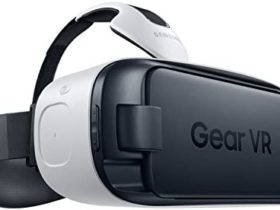A completely digital, computer-generated, three-dimensional immersive experience is called virtual reality. In contrast to conventional user interfaces, which limit users from viewing a screen, virtual reality (VR) enables users to immerse themselves in and interact with a 3D world that can either closely resemble or be completely different from the real world. (Related: VR medical education, AR + VR medical education, augmented reality medical education).
A computer can become a gatekeeper to a new world by as closely replicating the senses as possible, including vision, hearing, and occasionally touch. The availability of content and computational power are the only constraints on a VR experience. Virtual reality simulations fall into three main categories: non-immersive, semi-immersive, and fully immersive.
Non-Immersive VR
Due to its widespread use in daily life, non-immersive virtual experiences are frequently disregarded as a distinct genre of virtual reality. The user can be immersed in a computer-generated environment while still being conscious of and in control of their physical surroundings thanks to this technology. A computer or video game console, a monitor, and input tools like keyboards, mice, and controllers are required for non-immersive virtual reality systems. A fantastic illustration of a non-immersive VR experience is playing a video game.
Semi-Immersive VR
Users can encounter a partially virtual environment through semi-immersive virtual experiences. When users concentrate on the digital image, it will still give them the impression that they are in a different reality, but it also lets them be aware of their immediate surroundings. Vertical reality depth, a word for 3D graphics used in semi-immersive technology, creates realism. A more immersive experience is produced by detailed graphics. This type of VR is frequently used for instruction or training, and it makes use of high-resolution screens, potent computers, projectors, or hard simulators that only partially mimic the look and feel of real-world mechanics.
Fully Immersive VR
Users that use fully immersive simulations get the most lifelike simulation experience possible, including sight and sound. The user requires the appropriate VR glasses or a head mount display to engage and experience fully immersive virtual reality (HMD). High-definition, wide-field of vision content is offered by VR headsets. A stereoscopic 3D effect is often produced by the display when it is split between the user’s eyes, and input tracking is combined with this to provide a convincing, immersive experience. Although this kind of VR has typically been used for gaming and other forms of entertainment, its use in other fields, particularly education, is growing. There are countless applications for virtual reality.
If you are interested in more articles related to virtual reality, here’s one about the top 13 IVR accessories.











Leave a Reply